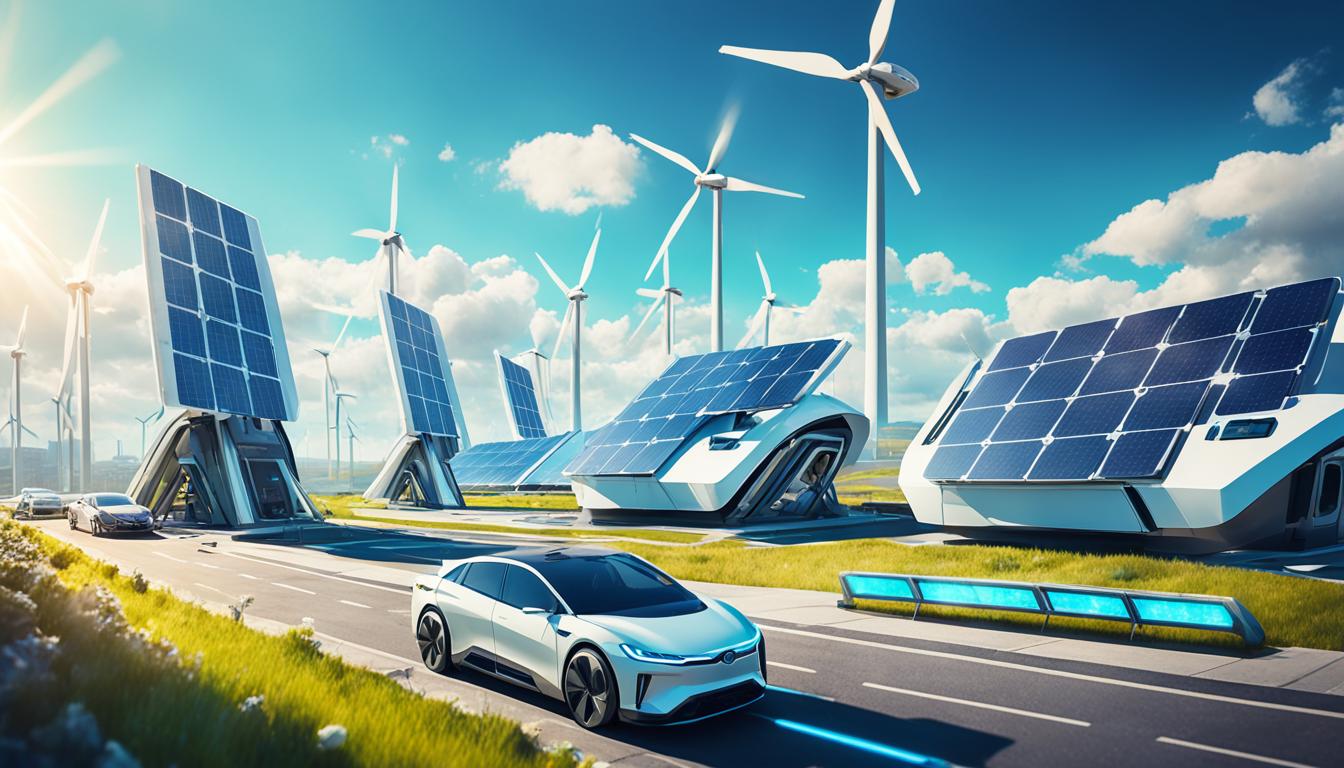
As the world navigates towards a more sustainable future, the prospects for renewable energy in 2025 are nothing short of promising. According to the International Energy Agency’s (IEA) ‘Renewable 2020’ report, renewable energy capacity is set to expand 50% between 2019 and 2024, led by the rapid growth of solar energy. The IEA’s findings suggest that solar, wind, and hydropower projects are rolling out at their fastest rate in four years, making a compelling case that the future of energy lies in harnessing the power of renewable sources.
Currently, renewable energy resources make up 26% of the world’s electricity, but the IEA expects this share to reach 30% by 2024. This resurgence follows a global slowdown in 2019, as falling technology costs and rising environmental concerns have rekindled the world’s interest in clean, eco-friendly energy alternatives.
Key Takeaways
- Renewable energy capacity is set to expand 50% between 2019 and 2024.
- Solar, wind, and hydropower projects are rolling out at their fastest rate in four years.
- Renewable energy resources currently make up 26% of the world’s electricity, but this is expected to reach 30% by 2024.
- The resurgence in renewable energy follows a global slowdown in 2019, driven by falling technology costs and rising environmental concerns.
- The future of energy lies in harnessing the power of renewable sources like solar, wind, and hydropower.
Renewable Energy’s Resilience and Expansion
In sharp contrast to all other fuels, renewables used for generating electricity will grow by almost 7% in 2020 despite the COVID-19 pandemic. Global energy demand is set to decline 5%, but long-term contracts, priority access to the grid, and continuous installation of new plants are underpinning strong growth in renewable electricity, more than compensating for declines in bioenergy for industry and biofuels for transport, mostly the result of lower economic activity. Investor appetite for renewables remains strong, with auctioned renewable capacity 15% higher from January to October 2020 compared to the same period last year, a new record. Shares of publicly listed renewable equipment manufacturers and project developers have been outperforming most major stock market indices and the overall energy sector, thanks to expectations of healthy business growth and finances over the medium term.
Surge in Renewable Capacity Additions
Driven by China and the United States, net installed renewable capacity will grow by nearly 4% globally in 2020, reaching almost 200 GW. Higher additions of wind and hydropower are taking global renewable capacity additions to a new record this year, accounting for almost 90% of the increase in total power capacity worldwide. Solar PV growth is expected to remain stable as a faster expansion of utility-scale projects compensates for the decline in rooftop additions resulting from individuals and companies reprioritizing investments. Wind and solar PV additions are set to jump by 30% in both China and the United States as developers rush to complete projects before changes in policy take effect.
What are the prospects for renewable energy in 2025?
The future of renewable energy is looking increasingly promising, as the industry continues to outpace fossil fuels in terms of growth and adoption. According to industry experts, the prospects for renewable energy in 2025 are particularly exciting, with several key developments on the horizon.
Overtaking Fossil Fuels
Total installed wind and solar PV capacity is on course to surpass natural gas in 2023 and coal in 2024. Solar PV alone accounts for 60% of all renewable capacity additions through 2025, and wind provides another 30%. Driven by further cost declines, annual offshore wind additions are set to surge, accounting for one-fifth of the total wind annual market in 2025. The rapid growth of variable renewables around the world calls for increased policy attention to ensure they are securely and cost-effectively integrated into electricity systems.
Becoming the Largest Source of Electricity
Renewables will overtake coal to become the largest source of electricity generation worldwide in 2025. By that time, they are expected to supply one-third of the world’s electricity. Hydropower will continue to supply almost half of global renewable electricity, followed by wind and solar PV. Renewables’ continued cost declines are changing the investor landscape, with the share of renewables’ growth coming from purely market-based settings outside of policy programs like auctions and feed-in tariffs tripling from less than 5% today to more than 15% through 2025.

Conclusion
The future of renewable energy is undoubtedly bright. As the International Energy Agency’s (IEA) executive director, Fatih Birol, states, “This is a pivotal time for renewable energy. Technologies such as solar and wind are at the heart of transformations taking place across the global energy system. Their increasing deployment is crucial for efforts to tackle greenhouse gas emissions, reduce air pollution, and expand energy access.”
The surge in renewable energy capacity additions and the prospect of renewables overtaking fossil fuels as the primary source of electricity generation by 2025 highlight the promising future of sustainable power sources in the years ahead. Renewable energy will continue to rise in the upcoming decade, edging out fossil fuels and reducing greenhouse gas emissions, making it a crucial component in the fight against climate change.
This shift towards renewable energy is not only environmentally beneficial but also economically promising. As the costs of technologies like solar and wind continue to decline, the investment landscape is changing, with more and more market-based growth outside of policy programs. The future of renewable energy is bright, and it’s up to all of us to embrace and support this transition to a more sustainable future.
FAQ
What are the prospects for renewable energy in 2025?
According to the International Energy Agency (IEA), renewable energy capacity is set to expand 50% between 2019 and 2024, led by solar energy. The IEA expects the share of renewable energy in global electricity generation to reach 30% by 2024, up from 26% currently. Renewables are projected to overtake coal as the largest source of electricity generation worldwide in 2025.
How resilient is renewable energy to the COVID-19 pandemic?
In stark contrast to other fuels, renewables used for generating electricity will grow by almost 7% in 2020 despite the COVID-19 pandemic. Global energy demand is set to decline 5%, but long-term contracts, priority access to the grid, and continuous installation of new plants are underpinning strong growth in renewable electricity.
What is driving the surge in renewable capacity additions?
Driven by China and the United States, net installed renewable capacity will grow by nearly 4% globally in 2020, reaching almost 200 GW. Higher additions of wind and hydropower are taking global renewable capacity additions to a new record this year, accounting for almost 90% of the increase in total power capacity worldwide.
When will renewable energy overtake fossil fuels as the primary source of electricity?
Renewables will overtake coal to become the largest source of electricity generation worldwide in 2025. By that time, they are expected to supply one-third of the world’s electricity, with hydropower, wind, and solar PV leading the way.
What is the long-term outlook for renewable energy growth?
Renewable energy will continue to rise in the upcoming decade, edging out fossil fuels and reducing greenhouse gas emissions. The surge in renewable energy capacity additions and the prospect of renewables overtaking fossil fuels as the primary source of electricity generation by 2025 highlight the promising future of sustainable power sources in the years ahead.
